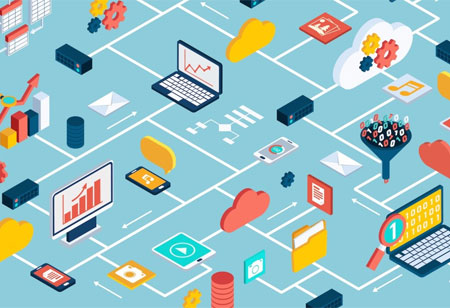THANK YOU FOR SUBSCRIBING
Challenges of Securing the Internet of Things
Each IoT device is an attack surface that hackers can use to gain access to your data. According to a Comcast survey, the average household receives 104 threats each month. Laptops, laptops, smartphones and tablets, networked cameras and stora

By
Apac CIOOutlook | Monday, May 03, 2021
Stay ahead of the industry with exclusive feature stories on the top companies, expert insights and the latest news delivered straight to your inbox. Subscribe today.
Each IoT device is an attack surface that hackers can use to gain access to your data. According to a Comcast survey, the average household receives 104 threats each month. Laptops, laptops, smartphones and tablets, networked cameras and storage devices, and streaming video devices are among the most vulnerable devices, according to a new survey.
Fremont, CA: The Internet of Things (IoT) refers to internet-connected devices and appliances that are readable, identifiable, locatable, addressable, and/or controllable. This includes physical objects interacting with one another, such as machines communicating with machines and machines communicating with people. It includes everything from edge computing to home appliances, as well as wearable technology and automobiles. The Internet of Things (IoT) is the convergence of the physical and digital worlds.
By 2025, it is estimated that there will be over 30 billion IoT connections, almost four IoT devices per person on average, and trillions of sensors connected and communicating on these devices. In 2020, the Internet of Things will have 12 billion connections.
Each IoT device is an attack surface that hackers can use to gain access to your data. According to a Comcast survey, the average household receives 104 threats each month. Laptops, laptops, smartphones and tablets, networked cameras and storage devices, and streaming video devices are among the most vulnerable devices, according to a new survey.
Most IoT devices, unlike laptops and smartphones, have limited processing and storage capacities. This makes it impossible to use anti-virus, firewalls, and other security software to keep them secure. Edge computing, on the other hand, aggregates local data intelligently, making it a focused target for sophisticated threat actors. In addition to IoT device hardware, ransomware can target applications and data. Check Point Research recorded a 50 percent rise in the regular average number of ransomware attacks in the third quarter of 2020 compared to the first half of the year.
Supply Chain Weaknesses and Endpoints
Supply chain vulnerabilities are exacerbated by the Internet of Things (IoT). The exponential networking of the Internet of Things is a mesh of networks and devices that is constantly expanding. The internet of things faces a major challenge from increased endpoint convergence combined with an increasingly increasing and poorly managed attack surface. Hackers may use IoT endpoints to flood websites with massive numbers of traffic requests, causing them to crash. According to a report conducted by The Altman Vilandrie & Company in April of 2017, almost half of U.S. companies that use the Internet of Things have had cybersecurity breaches. Many more companies are likely to have been hacked and have not reported the incident.
See Also :Top Wireless Tech Companies





